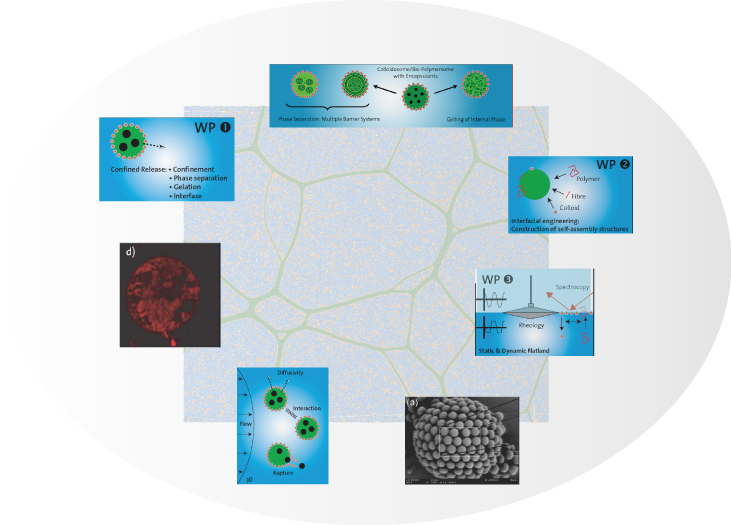
New controlled release systems produced by self-assembly of biopolymers and colloidal particles at fluid-fluid interfaces
| Spider silk threads are formed by the irreversible aggregation of silk proteins in a spinning duct with dimensions of only a few micrometers. Here, we present a microfluidic device in which engineered and recombinantly produced spider dragline silk proteins eADF3 (engineered Araneus diadematus fibroin) and eADF4 are assembled into fibers. Our approach allows the direct observation and identification of the essential parameters of dragline silk assembly. Changes in ionic conditions and pH result in aggregation of the two proteins. Assembly of eADF3 fibers was induced only in the presence of an elongational flow component. Strikingly, eADF4 formed fibers only in combination with eADF3. On the basis of these results, we propose a model for dragline silk aggregation and early steps of fiber assembly in the microscopic regime. [hide]
Scientific Board
Scientific Stuff
Associated Scientists |

|
Enjoy your reading
SY Tee, AR Bausch, PA Janmey, | |
Selected conferences (co-)organized by project members8th World Congress on Computational Mechanics WCCM8 200830 June - 5 July 2007, Venice, Italy ► |
13 May 2025
![]() mk
mk